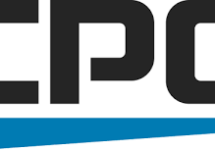The buzzwords on every marketer’s mind this year are “brand,” and “safety.” In the early days of the internet, safety was simpler to define. So long as a brand did not appear next to anything illegal or salacious, it was considered ‘safe.’ As the internet transformed into the global marketplace it is today, so did the type of content that could appear next to an ad. Ensuring brand safety may seem like an impossible feat, but there are measures brands can take now to achieve it.
1. Define your brand’s principles and stay true to them.
Brand leaders understand their brand ethos better than anyone else. Everything from ad creative to executive leadership, rolls into how a customer perceives a brand. The type of content brands appear next to also affects customer affinity. The parameters for what constitutes unsafe content are widening as internet bad apples grow more aggressive. To stay ahead of brand safety woes, brands must be prepared to continuously go to the drawing board. They must stay current on the types of unsavory content that exist online and ready a course of action to stay away from it. Dedicating an internal team to direct this effort will prove invaluable.
2. Choose partners that care about verification.
It’s been two years since mainstream media exposed the risks brands take on some platforms with lax brand safety measures. Advertisers like AT&T and Johnson & Johnson pulled their ads from YouTube
1in March 2017 when ads began appearing next to extremist content. In walled gardens like Facebook and YouTube, it’s often difficult to verify what content your brand may be appearing next to. As per the IAB’s recommendation, “Extra considerations [for brand safety] include audience verification and targeting parameters on proposed media buys.”
2In 2018, eBay partnered with Integral Ad Science (IAS) to provide 3rd party validation of traffic, helping advertisers better understand eBay’s authentic and safe environment. The IAS partnership helps eBay to exceed advertisers expectations by delivering inventory that achieves their specific viewability and brand safety goals.
3. Avoid questionable content by advertising on e-commerce platforms.
In an April 2018 study commissioned by Oath, 99% of respondents expressed concern about their ads appearing in brand-safe environments. From violence to hate speech, there is a massive amount of online content that advertisers must avoid. Some might argue that all sites relying heavily on user generated content (UGC) will never be safe. While this might be true for most UGC sites, there is one exception: eCommerce platforms.
By their very nature, eCommerce platforms are typically free of controversial content that can plague traditional publishers or social platforms. Additionally, eBay has a strict policy for prohibited items. When user violations occur, eBay’s robust policy and process activate to take appropriate action.
Building a brand’s reputation is no simple task. Brands cannot risk losing hard earned consumer trust by using bad ad placements or wasting impressions on non-human traffic. In 2019 and beyond, brands should ask more of their media partners to ensure they are participating in a brand safe environment.
Want to learn more about eBay’s commitment to brand safety? Contact our ad sales team.





